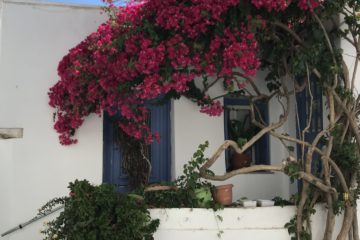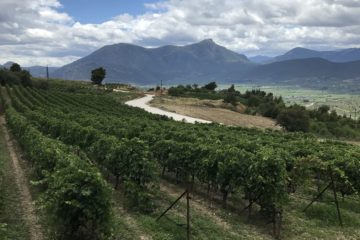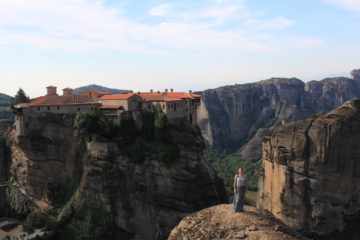We’d heard that the town of Kanchanaburi, Thailand was a really nice, cute place a few hours outside of Bangkok, but other than that we didn’t know much about it. We did know that after a decade-plus each in New York City, we weren’t too interested in overstaying our welcome in a huge city like Bangkok, so we decided to spend a couple of days first in Kanchanaburi. Our time there ended up being completely different from anything we’d expected, but in a really nice way that gave us a different experience than in the rest of the country. [Editor’s note: To be clear, our decision to go to Kanchanaburi was based almost entirely on the recommendations of a U.S. couple (from Seattle!) that we met while tubing down the river in Vang Vieng, Laos. They raved about the temples there as being their favorite in Asia and said we had to visit the city. Spoiler alert: we didn’t end up seeing any temples in Kanchanaburi, but still enjoyed it!]
After arriving from our overnight bus around 5am, nothing (including our hotel’s reception desk) was open. (Does this sound familiar? We’re getting used to arriving way earlier to a new city than anyone ever should!). Kanchanaburi seemed like a small, quiet town of just a few streets alongside a pretty river, with no buildings over two stories tall and stray dogs wandering the streets. We found the earliest café that opened, changed clothes, and strategized as we only had until the following afternoon before heading to Bangkok. [Editor’s note: We also tried like crazy to watch the NFC and AFC Championship Games on our phones/Kindles, but to no avail. Thwarted again in our desire to watch U.S. sports from abroad!] We considered a park with a pretty waterfall, but decided against it as it seemed pretty similar to other waterfalls (e.g., Kuang Si Waterfall in Luang Prabang, Laos) we’d seen recently. We decided to make our way to Hellfire Pass and the accompanying museum, which commemorate the site where the Japanese forced hundreds of thousands of people – mostly Asian laborers, but also tens of thousands of American, Australian, British, and other POWs – to manually (aka: with nothing more than primitive hammers, pickaxes and other tools) build the Thai-Burma railroad during World War II.
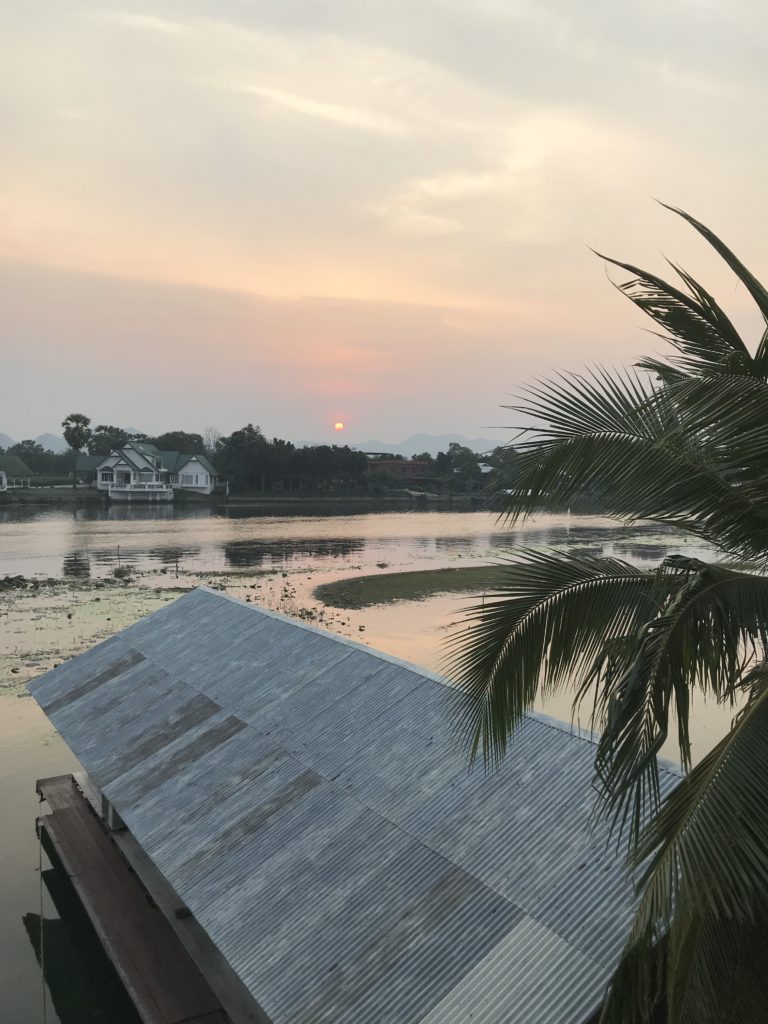
View of the River Kwai from our hotel (after we were finally able to check in following our overnight bus ride).
In search of a bit of adventure, we read several blogs about how to get there via local Thai buses and decided to take the plunge rather than paying to join a tourist day trip. After a brief tuk tuk ride to the bus station, we joined a cheap bus full of locals to head towards the museum (which was one of many stops on the bus). The bus driver dropped us off on the side of the freeway and gestured vaguely in a direction saying “Hellfire,” so we then wandered a ways off the road until a beautiful museum – paid for and maintained by the Australian government – opened up in front of us. While the museum was fairly small, it was really interesting in that it covered a part of history I had never heard a word about in my history classes – pretty much the only thing I learned about the Japanese in the war was Pearl Harbor. It turns out that on the exact same day as Pearl Harbor was bombed, the Japanese army also moved into Southeast Asia and took control of most of it. They needed to build this railway to supply their troops in Myanmar because ships were too vulnerable, and the horrific conditions and high casualty rate of the POWs and laborers used to build it gave it the name Death Railway (which is now the official name of the railway used by the Thai government for booking tickets on it). [Editor’s note: Nobody knows the exact numbers, but approximately 90,000 Asian laborers and 12,000 western POWs died in the process, mainly due to malnutrition, barbaric work conditions/hours, abuse/murder by guards and the spread of disease. This is a massive amount of people, particularly when you consider that it’s never mentioned in any history textbooks about WWII.] Hellfire Pass – the specific site where the museum stands – was a section of the railroad the deepest pass cut into solid rock along the whole 415km length of the tracks that were built, and was the site of many of the worst atrocities.
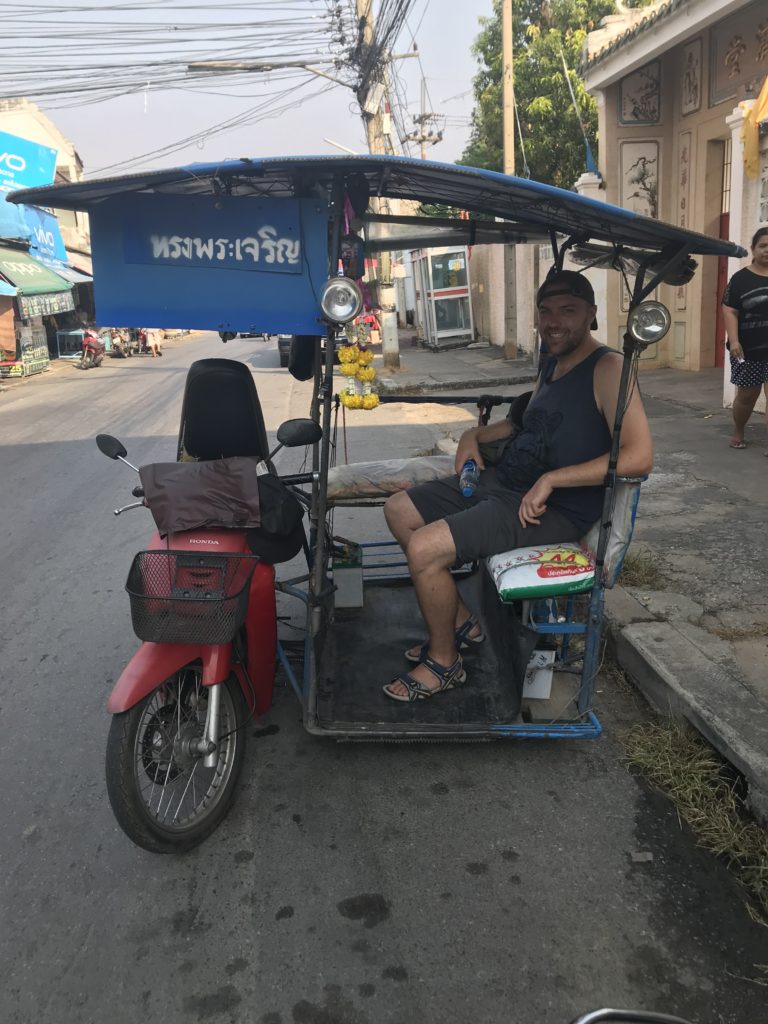
The awesome sidecar tuk tuks in Kanchanaburi. Easily our favorites in Southeast Asia!
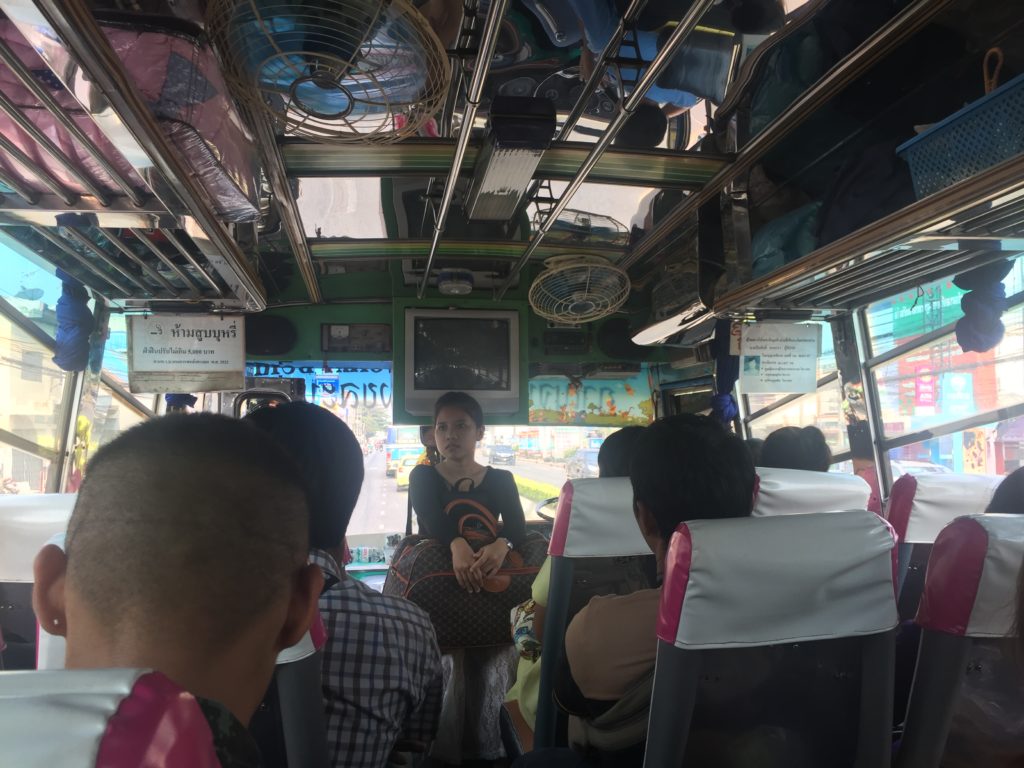
Inside the local bus that took us to Hellfire Pass. Note the oscillating fans in the ceiling and the box TV inside the front panel.
The museum was well done and informative, and was made better by the free audio guide that narrates personal survivor stories and background info as you walk the short hike into the woods to observe the Pass itself. It was a sobering experience, and was a really nice (if depressing) Thai complement to the other historical venues we’ve visited – The Killing Fields in Cambodia, the Cu Chi tunnels in Vietnam, and the Landmine center in Laos. [Editor’s note: Each of these incidents – and our lack of knowledge about them as Americans – is really eye-opening, particularly because it shows how much the narrative about history is really colored by where you are and how they are dispensed in school textbooks. Exposure to these events and alternative perspectives on historical incidents has been one of my favorite parts of our travels thus far.] Because we had opted to take the local bus out to Hellfire Pass, this created a bit of an adventure getting back as the promised “every 30 minutes or so” bus didn’t show up for over an hour and a half. On the bright side, also waiting at the bus stop was a girl that I had met in Mui Ne, Vietnam, almost two months prior! These incredibly random coincidences keep popping up, and are just as amazing and fun every time.
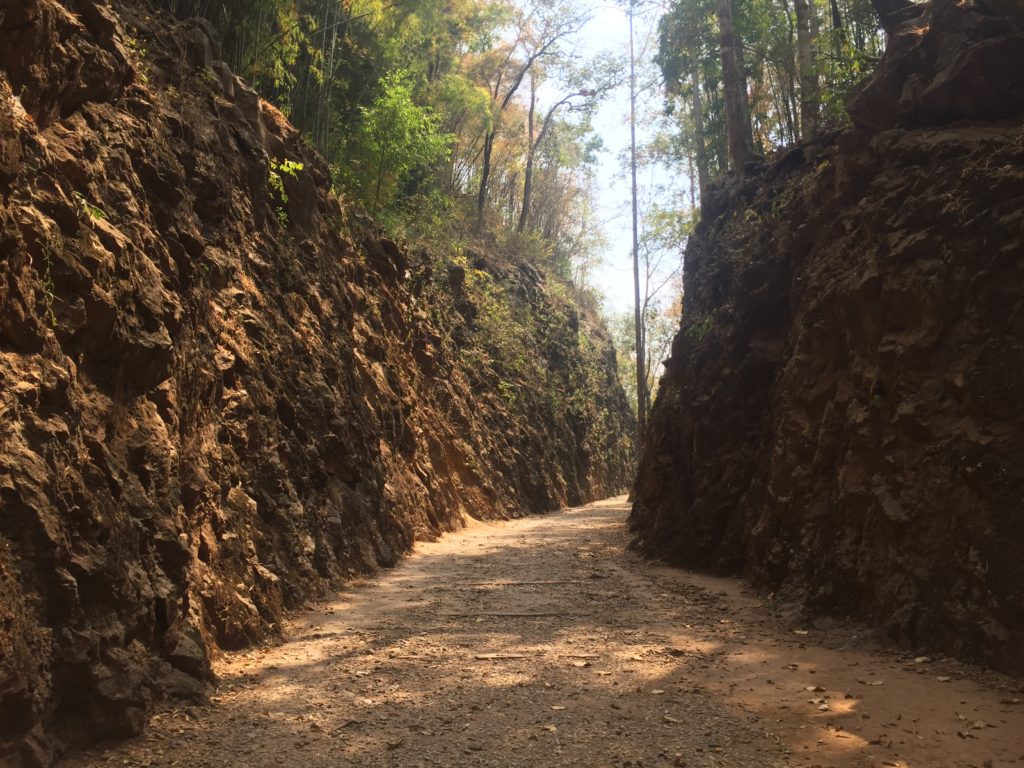
The official Hellfire Pass of rock that prisoners had to painstakingly chip and dig through.

Overhead view of the Hellfire Pass which shows just how deep it is (and how difficult it must’ve been to carve out).
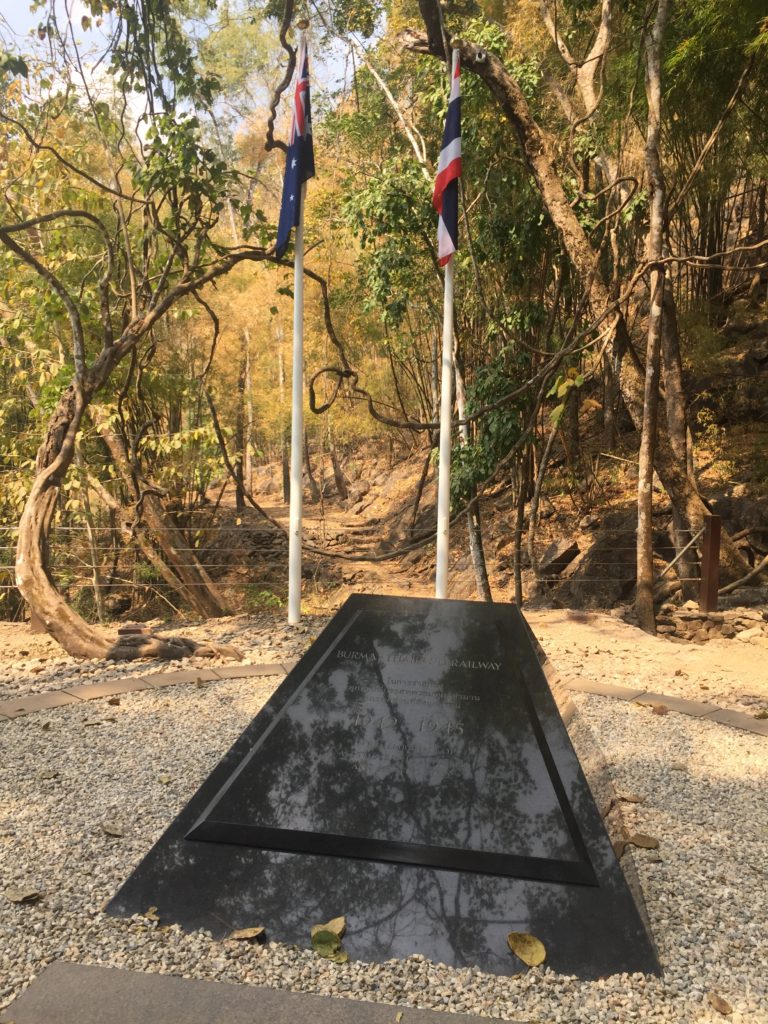
Monument to POWs and laborers who passed away while building the Death Railway.
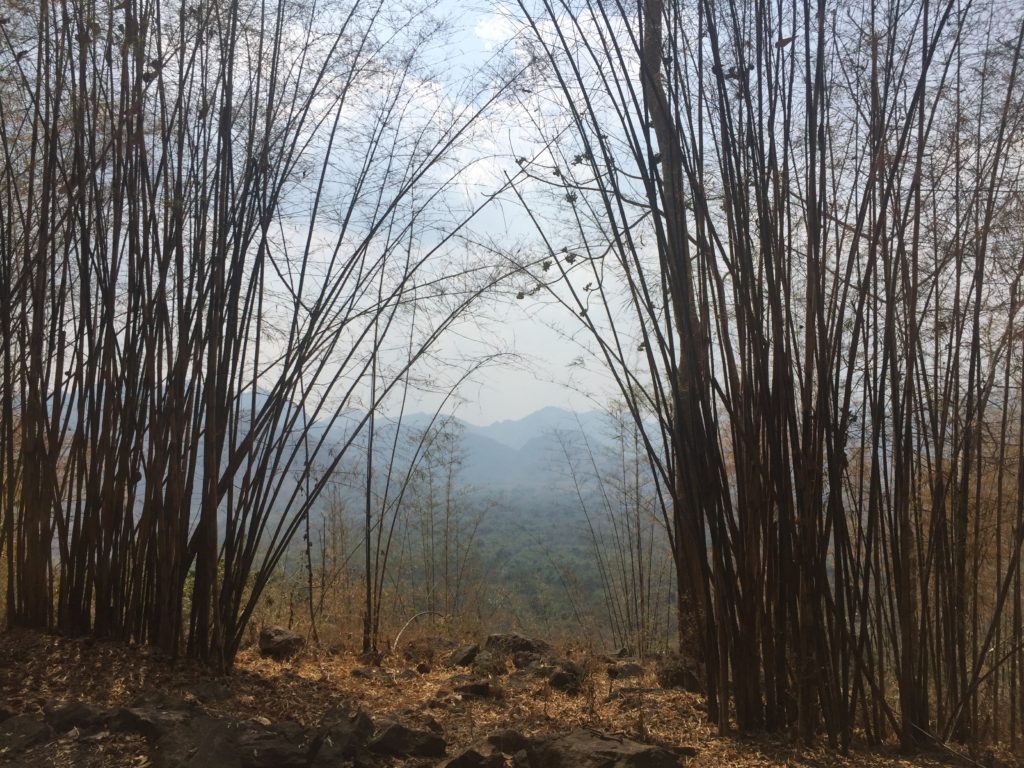
View of the valley from the train tracks near Hellfire Pass.
The following morning we chose to visit another of the main tourist attractions in Kanchanaburi: The Bridge Over the River Kwai. Made famous by the book and movie of the same name, this bridge is also part of the same Death Railway that the Hellfire Pass museum had taught us about. Beyond the fame and relevance to the prior day, I wanted to see this bridge to satisfy a long-standing inside joke with my mom (long story, but my family gets it!). We randomly got lucky and managed to be at the bridge at the exact time that the train itself crossed over it, which apparently only happens twice a day. It’s pretty funny to see because the bridge is swarming with tourists walking all over the train tracks, but then the train arrives so everyone just crowds to the side in designated “get off the tracks for a minute” areas, watches the train pass, then goes back to their selfies in the middle of the tracks as soon as it’s gone.
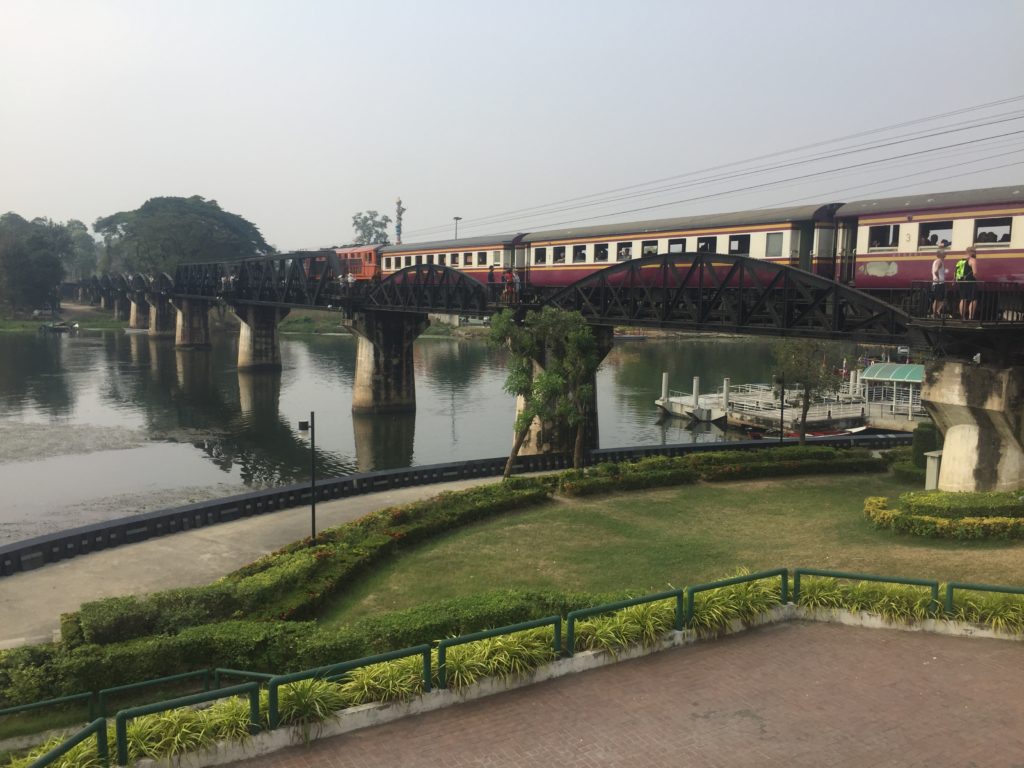
Train crossing the Bridge Over the River Kwai.
Overall I’d say that I’m glad we got to see the Hellfire Pass and the bridge to learn more about this side of Thai history, but other than that I didn’t get a ton of value out of the town of Kanchanaburi itself. We probably could have skipped it, but given that we didn’t plan for any of the things we ended up doing in advance, I think it was a worthwhile venture. After our visit to the bridge, we returned to our hotel in time to catch our 3-hour minibus to Bangkok to check out big-city living for the next few days! [Editor’s note: Jess is generally correct about Kanchanaburi being an okay place for most travelers to skip if they’re short on time, but I still really appreciated our short time there. In addition to the interesting information about WWII that we learned while here, it was also far and away the most authentic and local place we visited (though there certainly were some tourists there as well). I’ve really been struggling with how western and touristic every one of our stops in Thailand has been, so it was really nice to get to see a more authentic side of it (if only briefly).]
